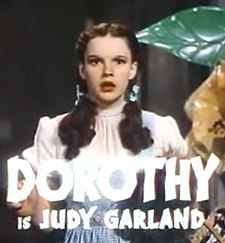Thirty-two-bar form

The thirty-two-bar form, often called AABA from the musical form or order in which its melodies occur, is common in Tin Pan Alley songs and later popular music including rock, pop and jazz. Though it resembles the ternary form of the operatic da capo aria its popularity declined and "there were few instances of it in any type of popular music until the late teens" of the twentieth century CE. It became "the principal form" of American popular song around 1925–1926.[1]
Some Tin Pan Alley songs consist of an eight-bar verse or "sectional verse" (A section) and a refrain or "sectional refrain", (B Section) of similar length, giving the thirty-two-bar form of AABA. The sectional verse is often omitted from modern performances and thus the refrain is often the only section remembered and heard. More commonly the A section or verse forms the main melody and is harmonically closed with a cadence on the "home" or tonic chord. The B section or middle eight is also often referred to as the bridge and sometimes as the release. In it a simple modulation is commonly found and at its end it remains harmonically open, often ending on the unresolved dominant chord of the home key and so preparing for the return of the verse.[2]
"In this form, the musical structure of each chorus is made up of four eight-bar sections, in an AABA pattern... Thousands of Tin Pan Alley tunes share this scheme and Adorno is quite justified in arguing that to listeners of the time it would be totally predictable."[3]
Thirty-two-bar form was often used in rock in the 1950s and '60s, after which verse-chorus form became more prevalent. Examples include:[4]
- George Gershwin "I Got Rhythm"
- Jerry Lee Lewis' "Great Balls of Fire" (1957)
- The Everly Brothers' "All I Have to Do Is Dream" (1958)
- The Shirelles' "Will You Love Me Tomorrow" (1960)
- The Beach Boys' "Surfer Girl" (1963)
Songwriters such as the Brill Building and Lennon-McCartney also used modified or extended thirty-two-bar forms, often modifying the number of measures in individual or all sections. The Beatles ("From Me to You" (1963) and "I Want to Hold Your Hand" (1963)), like many others, would extend the form with an instrumental section, second bridge, break or reprise of the introduction, etc., and another return to the main theme. Introductions and codas also extended the form. In "Down Mexico Way" "the A sections … are doubled in length, to sixteen bars—but this affects the overall scheme only marginally"[5]. Compound AABA form found in The Police's "Every Breath You Take" (1983), features a thirty-two-bar section, a contrasting bridge and then a repeat of the thirty-two-bar section, making a compound of ABA and AABA form: AABACAABA: a form of rondo. Other examples include:[6]
- Boston's "More Than a Feeling" (1976)
- Righteous Brothers' "You've Lost That Lovin' Feelin'" (1964)
- Led Zeppelin's "Whole Lotta Love" (1969)
- Tom Petty's "Refugee" (1979)
References
- ^ Wilder, Alec (1972), American Popular Song: the Great Innovators 1900–1950, New York: Oxford University Press, p. 56, ISBN 0-19-501445-6
- ^ Covach, John (2005), "Form in Rock Music: A Primer", in Stein, Deborah (ed.), Engaging Music: Essays in Music Analysis, New York: Oxford University Press, p. 69, ISBN 0-19-517010-5
- ^ Middleton, Richard (1990), Studying Popular Music, Philadelphia: Open University Press, p. 46, ISBN 0-335-15275-9
- ^ Covach, page=70
- ^ Covach (2005), p. 70
{{citation}}: Missing or empty|title=(help) - ^ Covach (2005), pp. 74–75
{{citation}}: Missing or empty|title=(help)
